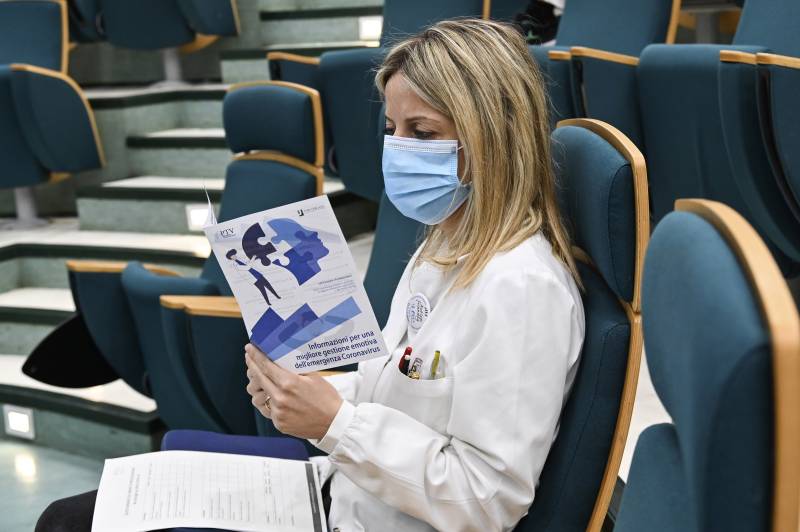Police boost virus controls as Italians make bid for freedom

Stay tuned with 24 News HD Android App

Police in Italy tightened lockdown controls Wednesday as cabin fever and a slowing in the coronavirus death toll tempted Italians out in increasing numbers.
One month since the nationwide measures were enforced, Italy’s “Phase 2” plans for easing the lockdown have gripped the nation but also divided it.
There are those who insist the economically crippling shutdown must end and those who fear the deadly disease could rebound.
In the wealthy northern Lombardy region, hardest-hit by a virus that has claimed over 17,500 lives nationwide, traffic was up over 10 percent compared to a week ago. Local authorities described that as “alarming”.
Milan’s mayor Beppe Sala said roadblocks would be increased.
Officials there fear that the coming Easter weekend might encourage people to flout the ban on leaving the house except to shop for essential food or medicine, or for work.
Experts have warned the lockdown will cause a long and devastating recession, and see millions lose their jobs—despite a 25-billion-euro ($27 billion) emergency support programme from the government and more to come.
The governor of the Veneto region Luca Zaia said Wednesday he had “a plan ready to help businesses open again, while protecting workers’ safety”. He was just waiting for a green light from the government, he said.
But Prime Minister Giuseppe Conte has repeatedly urged caution. He cites the scientific community when he insists that the lifting of the lockdown cannot be rushed because it could spark another epidemic in another part of the country.
‘Keep guard up’
Italy’s epidemic has peaked. While the civil protection agency reported 542 new deaths Wednesday, with nearly 140,000 people infected, it also said a record 2,099 people had recovered in the previous 24 hours.
The infection rate however was slightly up -- 2.8 percent compared to 2.3 percent on Tuesday.
The agency’s chief Angelo Borrelli said that showed “we must keep our guard up, and follow the rules to stop the spread”.
“Today’s figures show we’re not yet seeing a clear decline (in the virus),” the World Health Organization’s deputy director Ranieri Guerra told journalists.
“We’re on a plateau, which is turning into a downward trajectory quite slowly. This means there is a reservoir of asymptomatic infected people who are continuing to spread the virus”.
He said there were “many” preliminary steps to be taken before easing the lockdown.
Those would include spot tests on the population to determine whether specific employment sectors could be more or less vulnerable to the virus, he said.
‘Everything humanly possible’
Those keen to relaunch the economy have suggested industrial activity could be allowed to start again on April 14. A broader lifting of restrictions—with social distancing still in place—could be allowed on May 4, they argue.
But the WHO’s Italian government adviser Walter Ricciardi told the Stampa daily “that’s not enough time”.
Social distancing measures might have to be enforced “until the end of the year”, he added.
The head of WHO Europe had the same message in a news conference Wednesday.
“Now is not the time to relax measures,” said WHO regional director for Europe, Hans Kluge.
“It is the time to once again double and triple our collective efforts to drive towards suppression with the whole support of society.”
Medical staff also fear that easing the lockdown will undo all the good work it has done so far.
Laura Lupi, a 24-year old Italian nurse, made that point in a statement from the virus frontlines published on the United Nations website.
“We will do everything that is humanly possible to overcome this situation together and we will succeed; we must. Never underestimate us nurses,” she said.
“The only thing we ask you is to stay at home for us. We will stay at work for you.”
